Follow us on Telegram for the latest updates: https://t.me/mothershipsg
If you live around Margaret Drive, you may notice a crowd of people at the car park with their huge cameras pointed up toward a tree.
Wondering what they are looking at?
It's a baby Grey-rumped treeswift and its gorgeous looking parents.
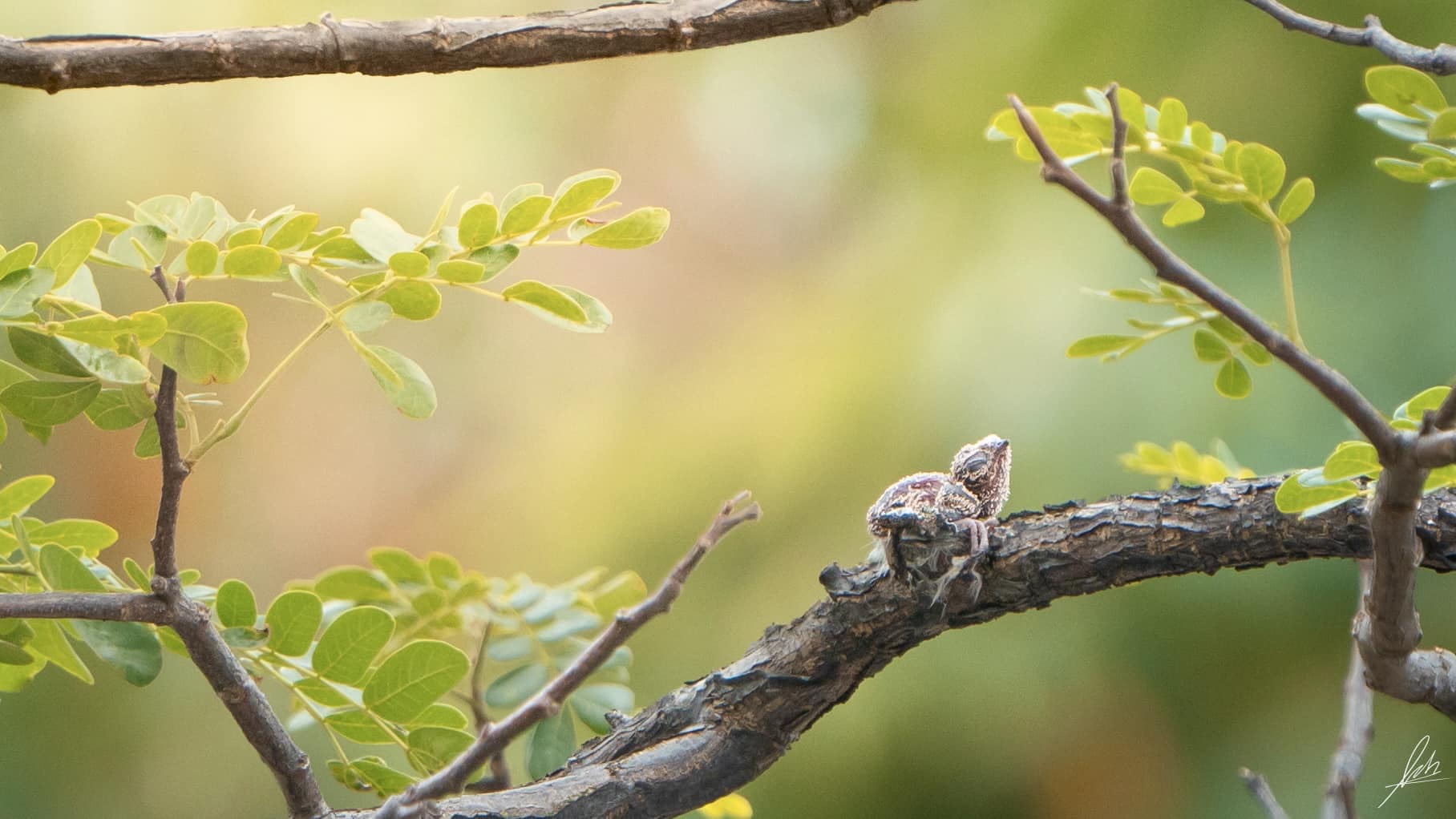 Aww. Image by Lee Zhi Heng.
Aww. Image by Lee Zhi Heng.
 Photo by Alex Han.
Photo by Alex Han.
More than 30 birders gathered to see fledgling
If you did not already know, the birding community in Singapore is a dedicated bunch.
With their large cameras and expensive gear in tow, these birders will flock to any part of Singapore to sight the animals they hold dear to their hearts.
So when news broke that a Grey-rumped treeswift had hatched at an open-air car park at Margaret Drive recently, the birders grabbed their gear and quickly got to work.
Those who are unaware or have not witnessed the birding community firsthand may be taken aback by the number of people, their level of passion, or both.
In a photo shared by a Mothership reader, more than 30 birders were sighted at the car park.
 Image courtesy of Mothership reader.
Image courtesy of Mothership reader.
A significant event
The hatching of the Grey-rumped treeswift comes after an unsuccessful nesting at the same location last year, which was also closely followed by birders.
According to a birder called Lee Zhi Heng, a pair of hornbills flew away with the egg before it could hatch.
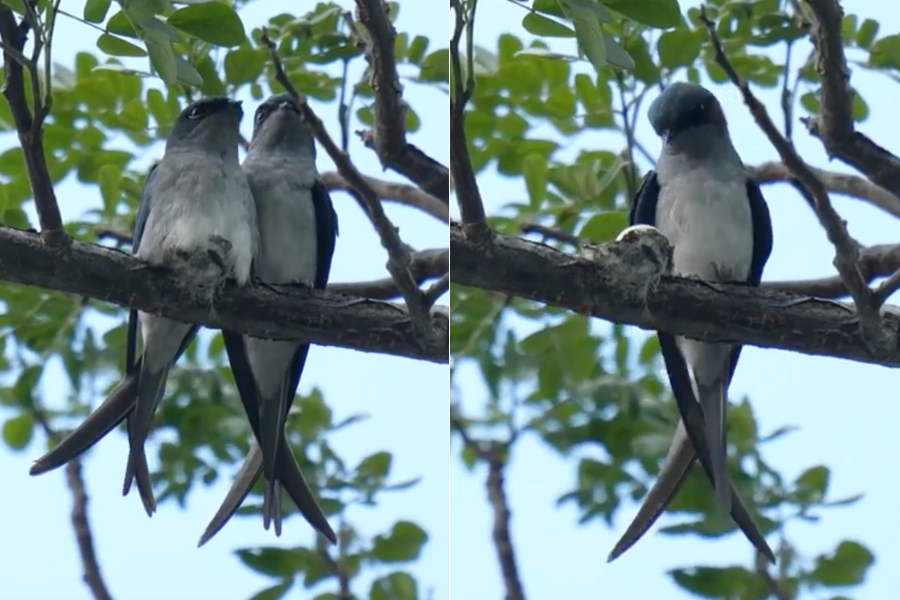 Taking turns to incubate egg at Margaret Drive in July 2022. Image by Alex Han.
Taking turns to incubate egg at Margaret Drive in July 2022. Image by Alex Han.
Grey-rumped treeswifts only produce a single egg each time during breeding season.
The egg takes around 50 days to hatch. That is if the conditions are right – it does not get taken away by predators or the parents do not abandon the nest.
This perhaps explains why the birders showed up in droves to mark and document the hatching this March.
Breeding season
Lee, who is a nearby resident, was the first birder to notice the hatchling, according to several birders Mothership spoke to.
Knowing that it will soon be the breeding season, Lee told Mothership he started keeping a lookout from as early as February.
There were two nests at the beginning, but one was abandoned a few weeks later.
Lee held out hope and continued checking in on the remaining nest regularly.
His efforts paid off when he saw a pair of adult Grey-rumped treeswifts taking turns to fortify the nest with feathers, which would help keep the egg warm.
A star is born
Fast forward five weeks later, Lee was greeted by a hatchling on Mar. 25, the day after he booked out from camp.
He said the egg likely hatched after Mar. 19, which was the last time he saw the nest before he went back to camp.
He immediately notified the other birders in his WhatsApp group and the rest is history.
Birders have since been tracking the fledgling's growth, and sharing their observations and photos on Facebook.
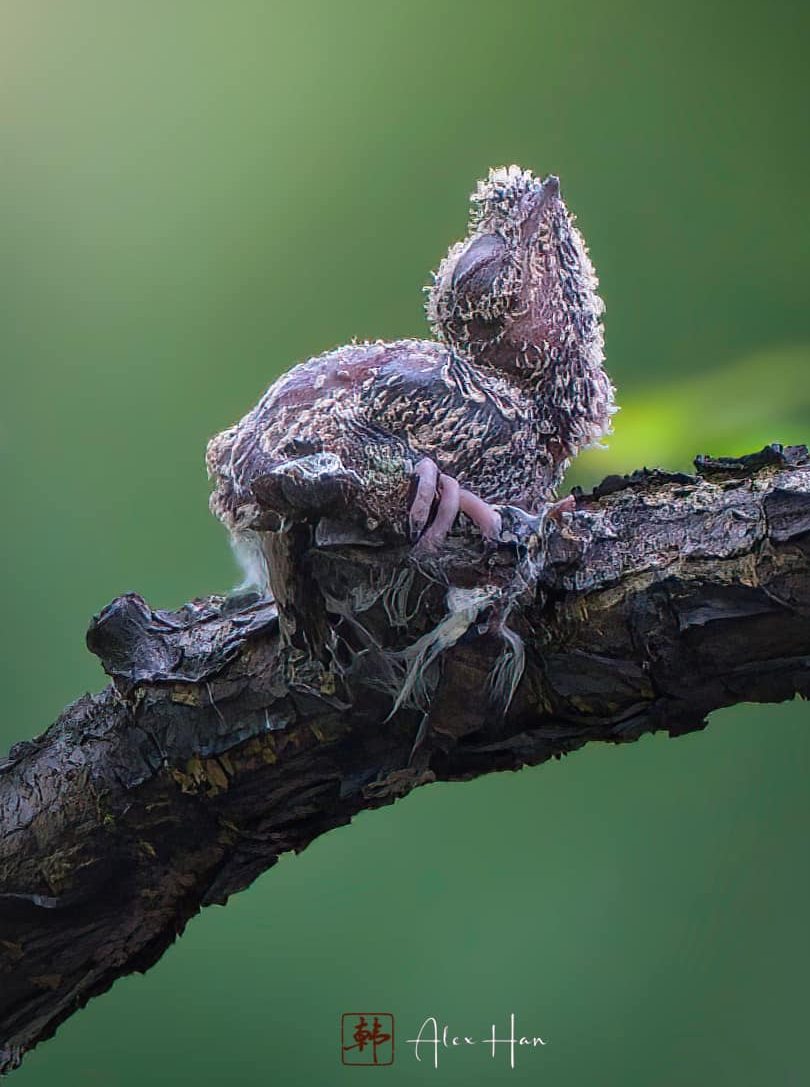 Image by Alex Han.
Image by Alex Han.
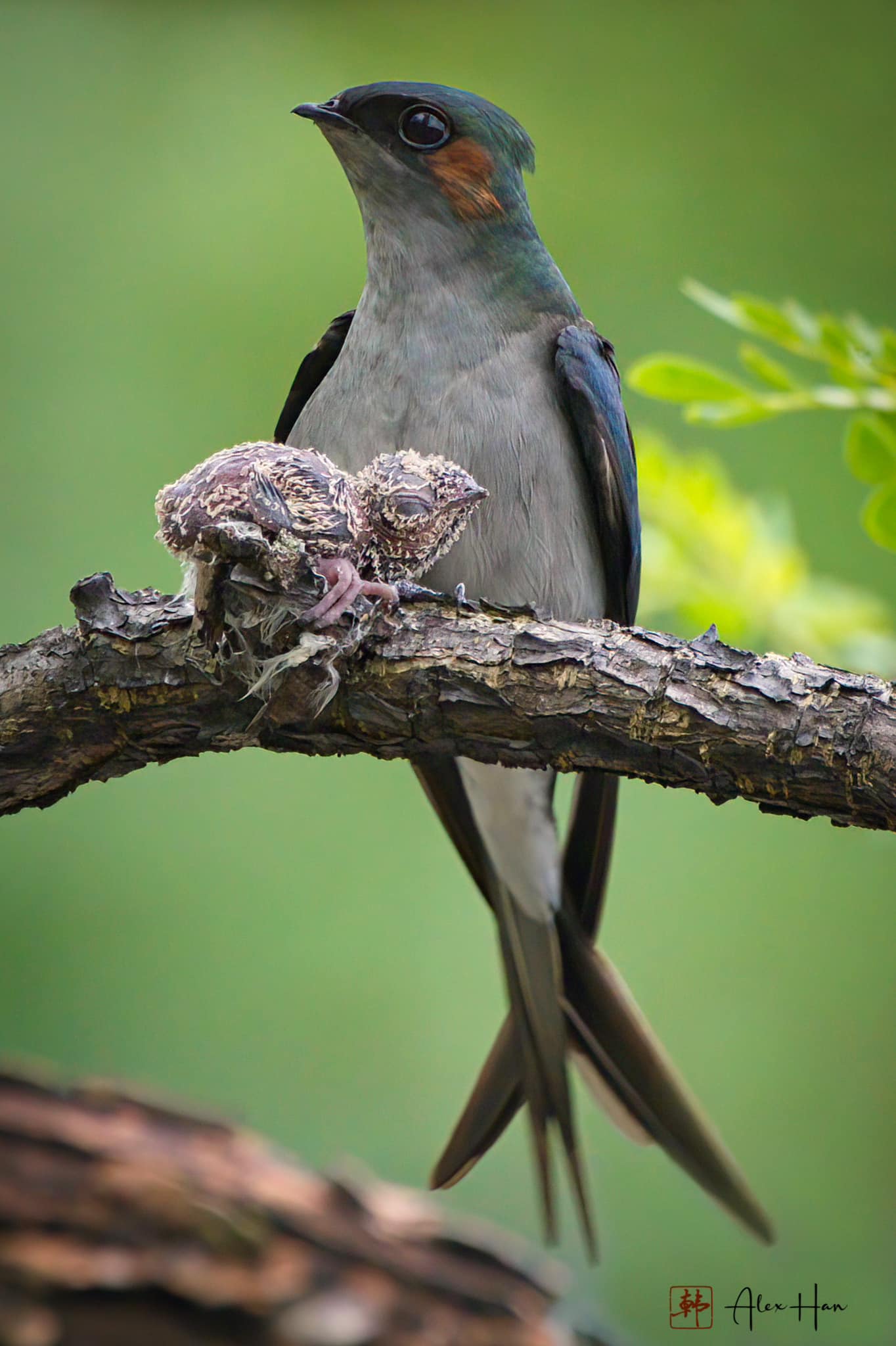 Image by Alex Han.
Image by Alex Han.
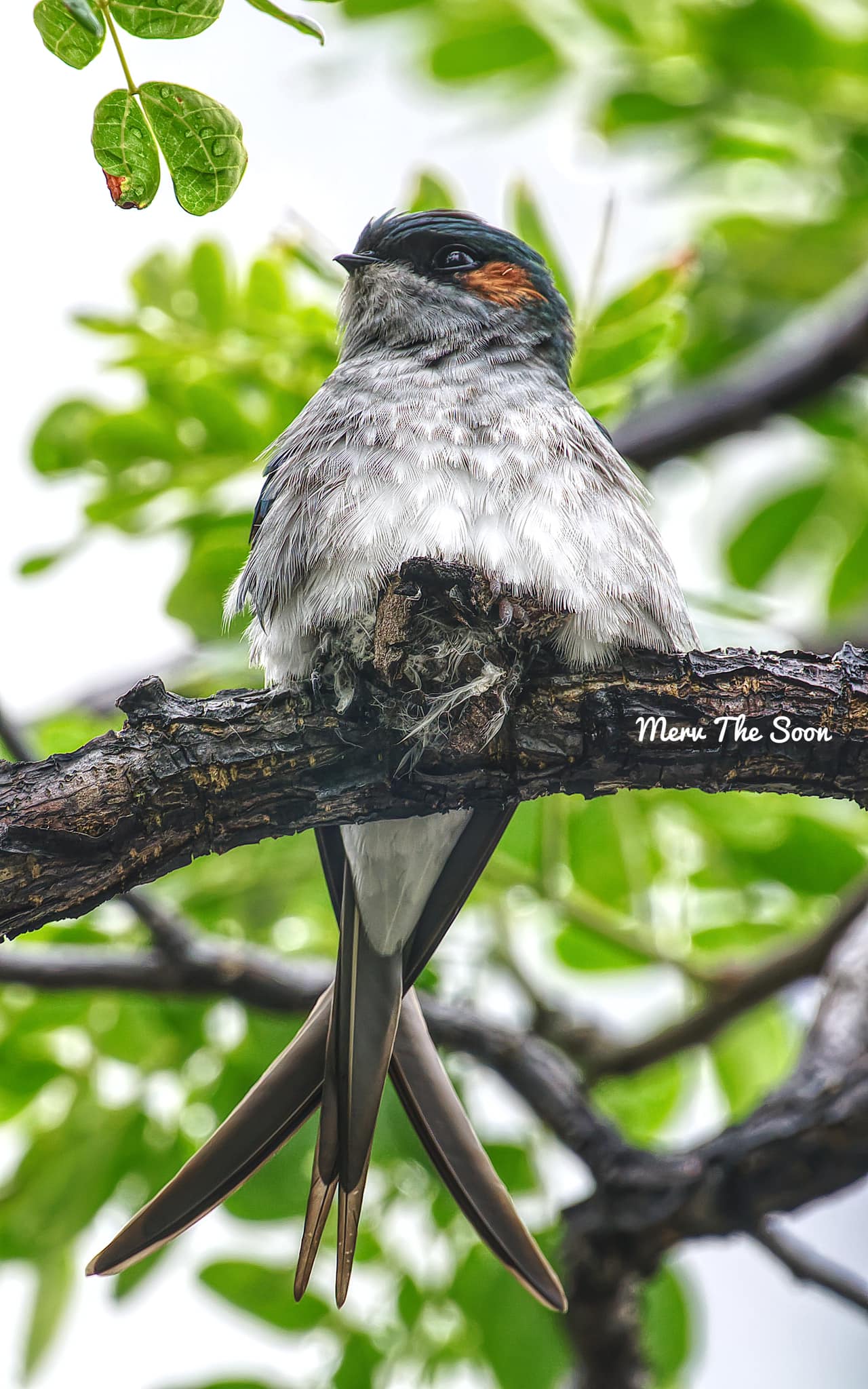 Image by Mervyn Soon.
Image by Mervyn Soon.
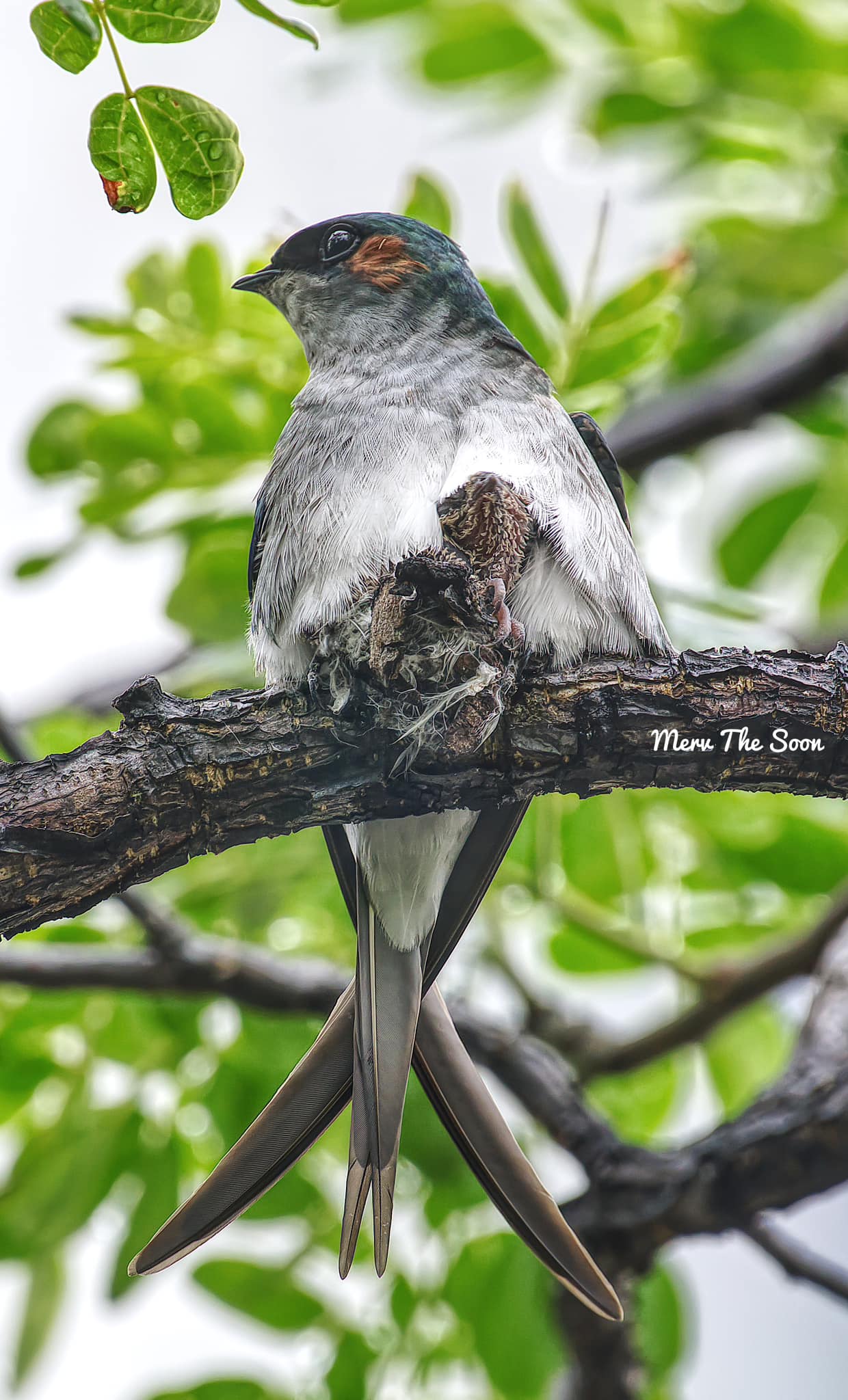 Image by Mervyn Soon.
Image by Mervyn Soon.
According to them, the fledgling has opened its eyes, and its crest and other features are becoming more noticeable.
The crest is the cluster of feathers on top of a bird's head. For Grey-rumped treeswifts, it looks a little like a mohawk.
However, the little fledgling still has some ways to go before it starts to look more like its parents.
Lee estimated it to be anywhere between two and two-and-a-half weeks old, as of the time of writing.
 Image by Derrick Wong.
Image by Derrick Wong.
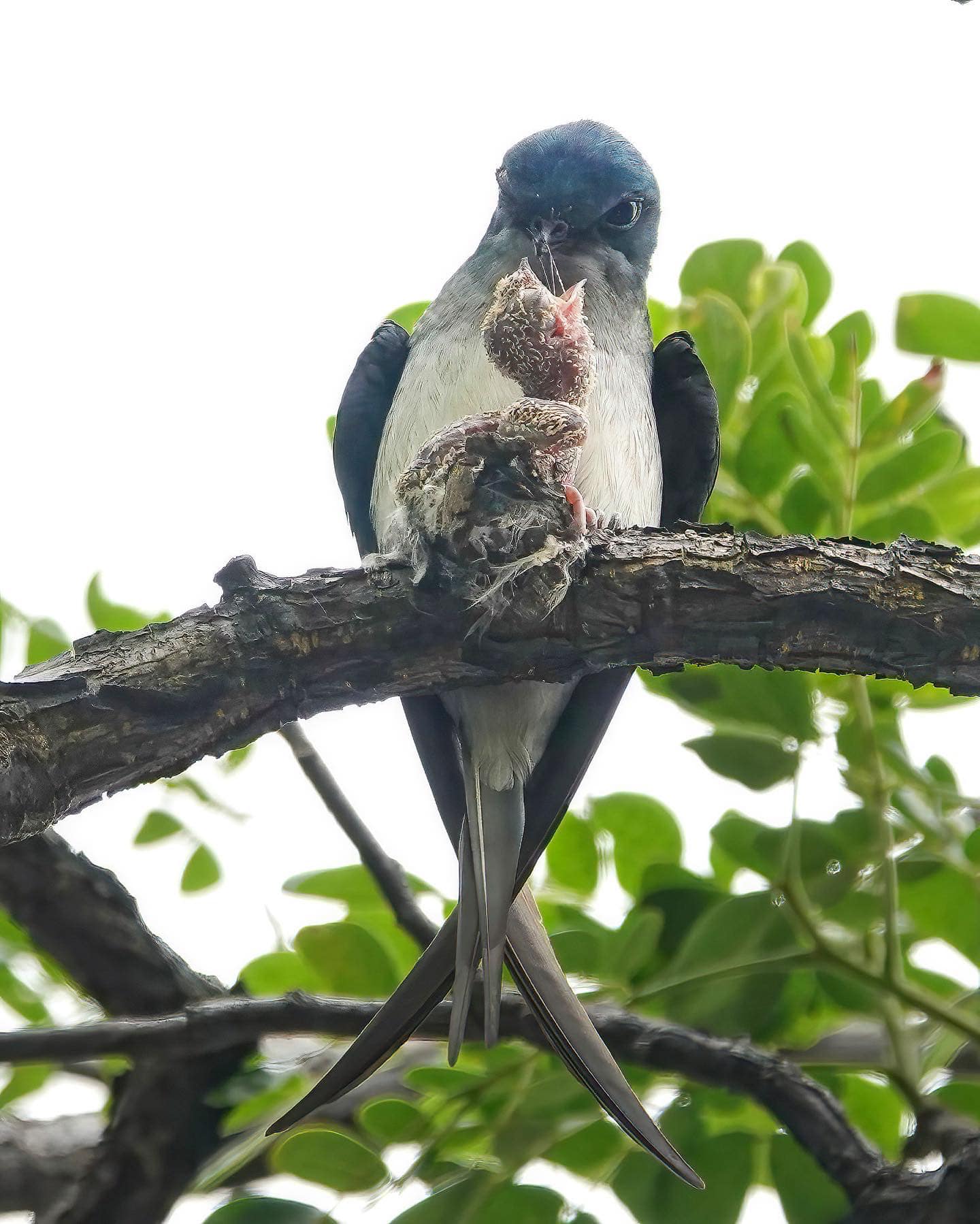 Image by Andy Chew.
Image by Andy Chew.
 Image by Mervyn Soon.
Image by Mervyn Soon.
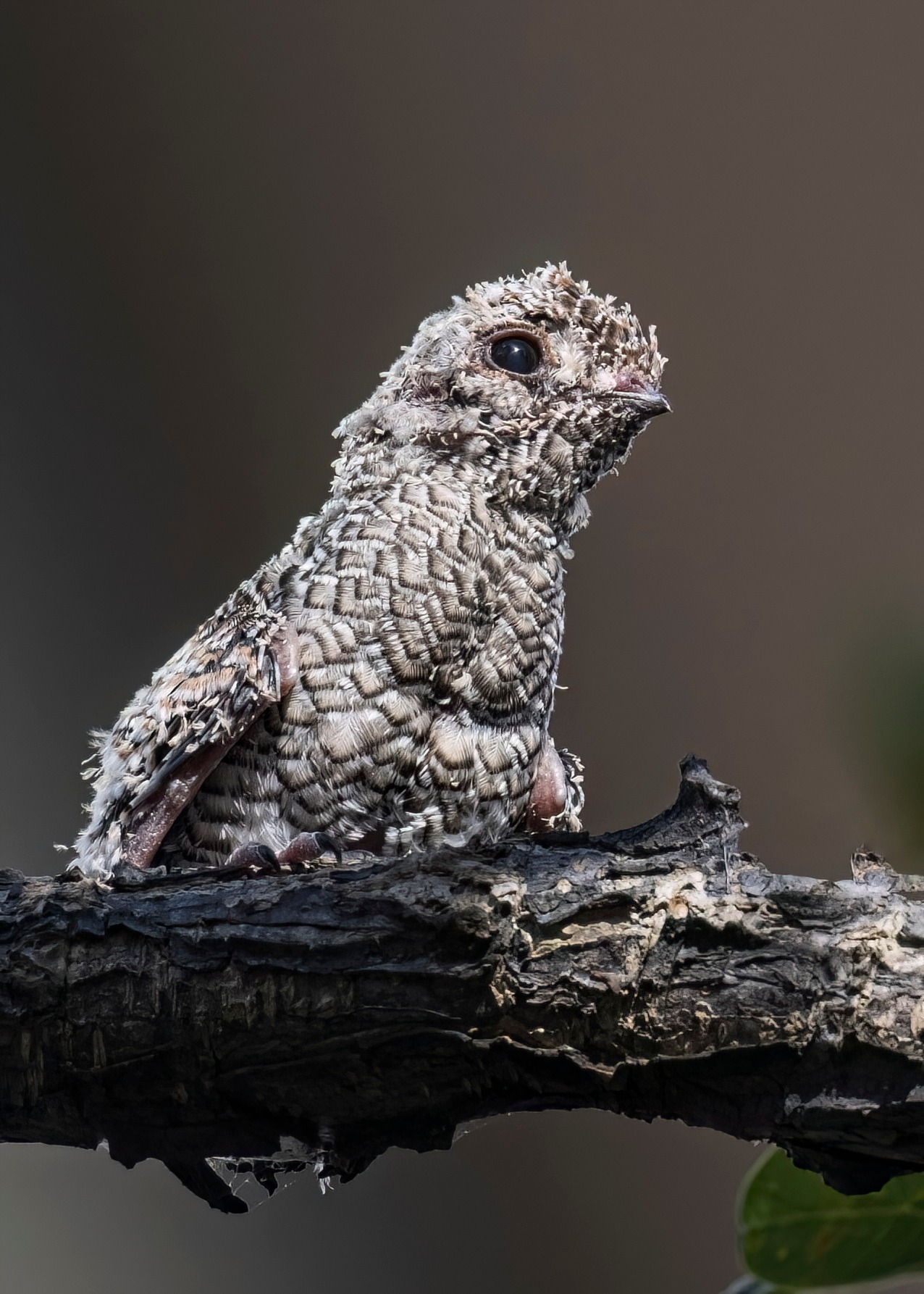 Image by Dave Koh.
Image by Dave Koh.
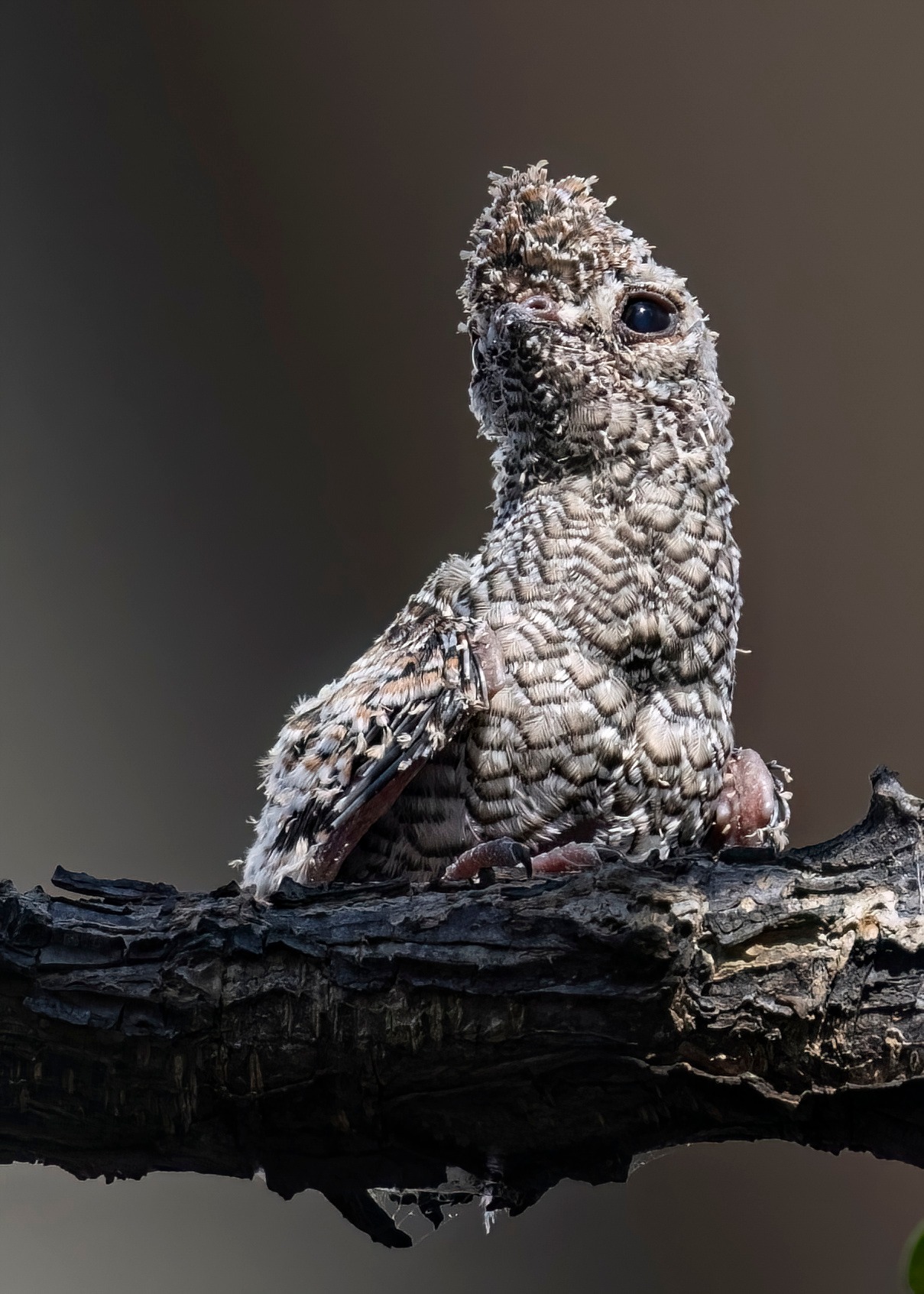 Image by Dave Koh.
Image by Dave Koh.
About Grey-rumped treeswifts
Grey-rumped treeswifts (Hemiprocne longipennis) are classified as "Least Concern" on the International Union for Conservation of Nature Red List of Threatened Species, or IUCN Red List, but their population is decreasing.
They can be found in Singapore, as well as in neighboring countries like Malaysia, Indonesia and south Thailand.
It is one of the two treeswifts recorded locally, the other being the Whiskered treeswift, which are "very rare residents" and hardly seen.
Compared to the elusive birds, Grey-rumped treeswifts are the relatively more common "uncommon residents".
They can be recognised by their grey throat and chest, which contrasts with their white underparts, and their dark glossy greenish-blue crown, nape and mantle.
Adult males have dull orange-red or chestnut-colored ear coverts, or cheek patches, whereas females have black ones.
 Image by Johnny Wee from Bird Ecology Study Group website.
Image by Johnny Wee from Bird Ecology Study Group website.
Grey-rumped treeswifts are arboreal, meaning they spend their time perched high up on trees.
They make their nests with a mixture of saliva, feathers, mosses and flakes of tree bark and the semicircle-looking structure is attached to the side of tree branch.
The single egg is stuck onto the nest with more saliva and the male and female take turns incubating the egg, perching themselves precariously over the fragile nest.
 Image by Johnny Wee from Bird Ecology Study Group website.
Image by Johnny Wee from Bird Ecology Study Group website.
Top image courtesy of Mothership reader and by Mervyn Soon
If you like what you read, follow us on Facebook, Instagram, Twitter and Telegram to get the latest updates.

